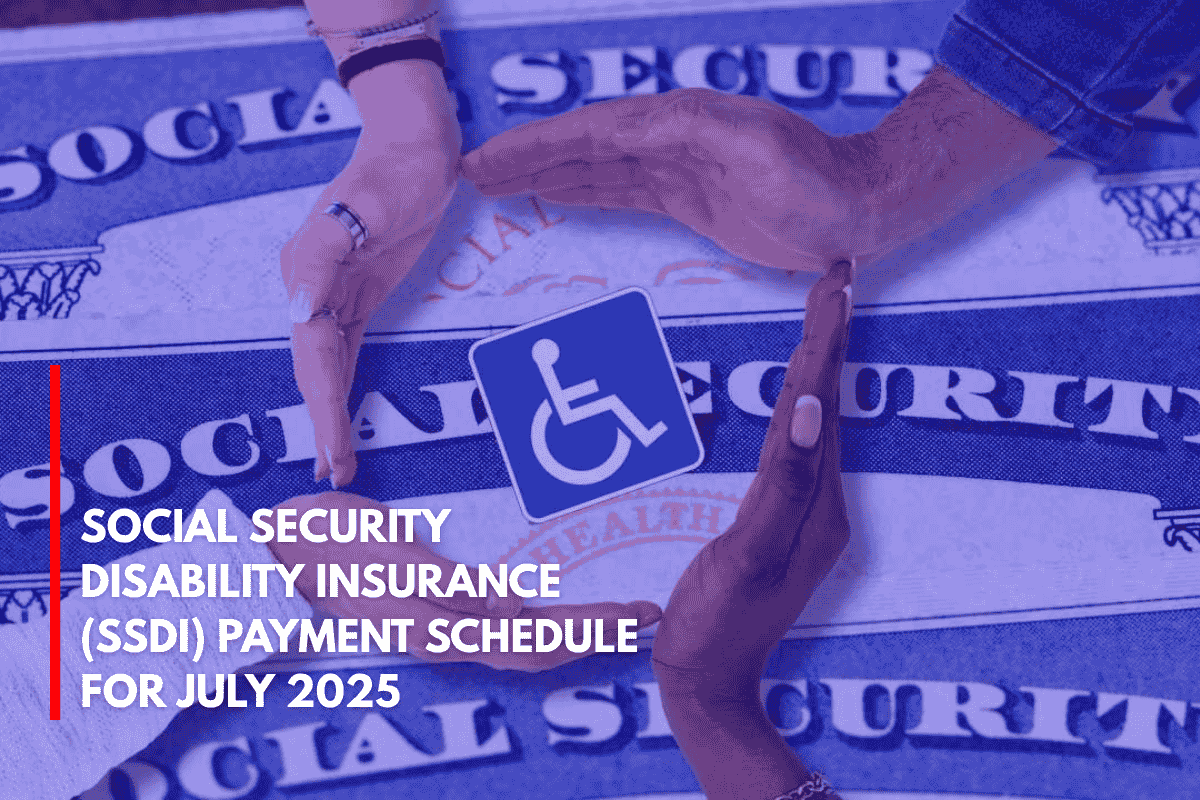Millions of Americans who receive Social Security Disability Insurance (SSDI) will get their deposits in July 2025. For beneficiaries, every dollar counts, and knowing exactly when the payments are expected and how much to expect is crucial.
SSDI Payment Dates for July 2025
The SSDI payment schedule for July 2025 follows a staggered system based on birthdates:
Thursday, July 3: Payments for those who started receiving SSDI before May 1997 and Supplemental Security Income (SSI) recipients. These payments have already been processed.
Wednesday, July 9: Beneficiaries who began SSDI after April 1997 and were born between the 1st and 10th of the month will receive payments on this date.
Wednesday, July 16: For those born between the 11th and 20th of the month.
Wednesday, July 23: Recipients born between the 21st and 31st of the month will receive payments on this day.
This payment structure remains consistent each year. For July 2025, there are no reported changes in the payment dates, and this system will continue to follow the same pattern.
SSDI Benefit Amounts: Averages, Maximums, and Increases
The average SSDI payment for disabled workers is $1,581 as of January 2025, reflecting a 2.5% Cost-of-Living Adjustment (COLA) increase. The July 2025 deposits will follow this average, with no significant mid-year changes. However, the exact amount a beneficiary receives depends on their work history.
Disabled workers with dependents (spouse/children): These recipients could receive up to $2,826 per month.
Retirees: The average for retirees is $1,907.
Retired couples: Couples receiving SSDI could get a combined average of $3,089.
Widowed parents: They can receive an average of $3,761.
These figures are average benchmarks. Actual amounts may differ based on individual circumstances, and the total amount will vary depending on factors such as work history and dependents.
Maximum SSDI Benefits:
The maximum SSDI benefit for 2025 is $4,018 per month, which applies to workers who have earned 35 years of top earnings and claim their benefits at the optimal age.
Retirees who wait until age 70 to start receiving benefits can get up to $5,108 per month.
The COLA increase does not affect the maximum benefit caps, meaning that while the overall benefit increases, the maximum payout remains fixed depending on work history and claiming age.
SSDI Eligibility and Benefits
To be eligible for SSDI, a person must have a disability that prevents them from doing “substantial gainful activity” (SGA) for at least 12 months, or they must have a terminal illness.
The condition must be listed in the SSA’s Blue Book, which outlines the criteria for various disabilities. Medical proof is a must for eligibility, and the SSA requires clear documentation to verify the disability.
Work Credits for SSDI:
To qualify for SSDI, you must have earned 40 work credits, with at least 20 credits earned in the 10 years before the disability onset. Younger workers may require fewer credits to qualify.
Work credits: For 2025, you can earn 1 credit per $1,810 earned each quarter, with a maximum of 4 credits per year.
Benefits for Dependents:
Spouses and children of SSDI recipients can qualify for auxiliary benefits based on the primary worker’s record. The amount depends on the worker’s SSDI benefit and the number of dependents.
For disabled adult children who were disabled before age 22, they can also qualify for SSDI benefits and can use ABLE accounts for savings without losing SSI or Medicaid coverage.
Medicare Coverage:
After 24 months on SSDI, recipients will automatically become eligible for Medicare (Parts A and B). Coverage begins in month 25, while Prescription Drug Plans (Part D) require separate enrollment.
New Overpayment Recovery Policy
Starting July 24, 2025, the Social Security Administration (SSA) will enforce a new overpayment recovery policy for SSDI recipients. If a recipient has been overpaid, the SSA will now withhold 50% of their monthly SSDI payments until the overpayment is fully repaid. Previously, the withholding rate was just 10%.
Affected beneficiaries will be given the chance to request a waiver if the repayment causes significant hardship or if the overpayment was not their fault. However, there are no guarantees that the waiver will be granted, and beneficiaries will need to submit evidence to the SSA for review.
Action Required: If you believe you’ve been overpaid, it’s essential to contact your local SSA office and report the issue immediately to avoid further complications.











Leave a Reply